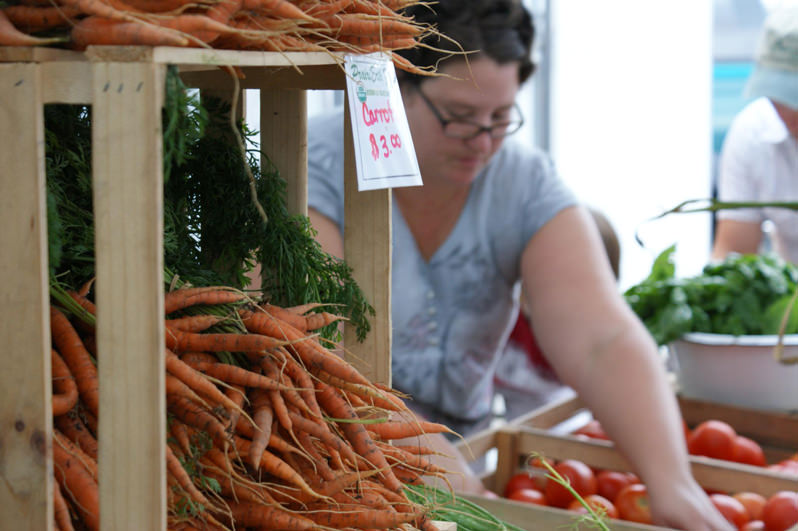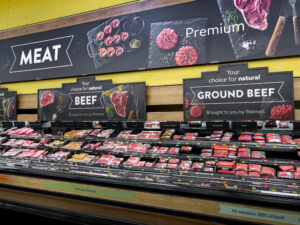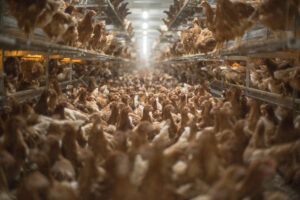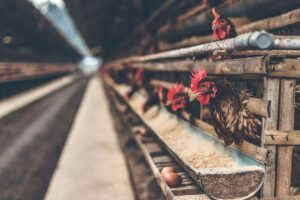Why Farmers Markets Are Critical to Food Security, the Environment and Public Health
By not using massive industrial farming and irrigation equipment, small farms better maintain the quality of our soil, air and water -- which is more healthful all around. By not using massive industrial farming and irrigation equipment, small farms better maintain the quality of our soil, air and water—which is more healthful all around. Gemma Billings / CC BY 2.0
Gemma Billings / CC BY 2.0
By Melissa Kravitz / AlterNet
Ending food insecurity may be as easy as supporting your local farmers market. In advance of World Food Day on October 16, American Farmland Trust, a Washington, D.C.-based nonprofit that promotes environmentally sound farming practices, named its top farmers markets in the nation, many of which are based in warmer, southern states like Florida and Virginia. But no matter what region you live in, farmers markets and small farms are essential to community health.
“Small family farms have been shown to be the most effective, per acre, at ecological stewardship, biodiversity and production of nutrition,” said Severine von Tscharner Fleming, founder of The Greenhorns, a non-profit group working to support a new generation of young farmers. “Small family farms employ more workers, supporting the local economy and rural prosperity … and can adapt and change with the market demands or shifts in climate,” she argues.
Rather than massive monoculture farms, which may vend millions of pounds of corn to be turned into animal feed or sugary cereal, smaller farms grow a variety of products—and it’s in the farmers’ best interest to treat their land sustainably (i.e., not decimate the soil with toxic pesticides and fertilizers),as well as treat their animals better than corporations.
While factory farms may produce a higher quantity of food, the “more is better” logic is not particularly relevant to our public health concerns—or our economy. “The current ‘more production’ orientation is so outdated and unresponsive to our current needs that it is causing its own problems, particularly for our environment and natural resources,” according to a 2012 United Nations report, “Food and Agriculture: The future of sustainability.” The report suggests a significant investment in small- and medium-sized farms to improve the overall health and viability of our food system worldwide.
By not using massive industrial farming and irrigation equipment, small farms better maintain the quality of our soil, air and water, which, from a public health standpoint, is pretty essential to our daily well-being. In contrast, explained von Tscharner Fleming, “large scale agribusiness landscapes not only degrade soil and water quality in the short term, reducing the biological health of the soil ecosystem, but also make them much more vulnerable to disease and drought, to crisis and collapse.”
Moreover, small farmers can have closer connections to particular needs of a community and “have an investment in community health,” said Juliet Sims, program manager at the Prevention Institute, a community health nonprofit based in Oakland, California. “We see support for small and mid-size farmers to engage in sustainable food production as a critical component of a sustainable food system that allows us to be food secure in the future.”
The USDA’s most recent Scientific Report of the Dietary Guidelines Advisory committee emphasizes the importance of fresh, unprocessed whole foods in American diets. “A diet higher in plant-based foods, such as vegetables, fruits, whole grains, legumes, nuts, and seeds, and lower in calories and animal-based foods is more health-promoting and is associated with less environmental impact than is the current U.S. diet,” the report states.
The key to reducing greenhouse gases and improving our overall health with better food options? You guessed it: Small farms. In its hundred-plus pages of research, the USDA reiterates the importance of local agriculture to improve long-term food security. “Access to sufficient, nutritious, and safe food is an essential element of food security,” the report states. “A sustainable diet ensures this access for both the current population and future.”
And this isn’t just a research theory—supporting local agriculture works.
“Farmers markets and farm stands can really improve the diets of community members who are food insecure,” Sims said. For example, in 2015 the California Nutrition Incentives Act created financial incentives for CalFresh (the equivalent of SNAP benefits) to match dollars spent on produce at farmers markets. Every CalFresh dollar spent on produce earns a matching dollar to spend on produce, which has “dramatically increased people’s intake of fruits and vegetables, often produced more sustainably and locally,” Sims explained. In Davis, the Market Match program has increased farmers market purchases by almost 300 percent, building the local economy while simultaneously improving the health of the community.
Of course, those not part of CalFresh or SNAP programs can support local agriculture by shopping at farmers markets, subscribing to CSAs and local farm cooperatives. Even those in urban settings can get in on the small farm purchasing, with services like FreshDirect delivering CSA boxes directly to New York City stoops. Sites like Overstock have also started delivering locally-grown produce and countless local initiatives by region bring the farmers market online and make it easier than ever to support local farms.
“We need to protect our remaining small farms, as teaching facilities, as places for ecological education and recreation, as reserves of biodiversity and rare animal breeds, as functional farm systems as a buffer against urban growth,” said von Tscharner Fleming.
So how do you support this imperative to long-term food security? “It’s really about changing our policy to connect consumers with small farmers,” Sims said. This policy change can occur in a number of ways, from “addressing the farm bill to making sure we have more grants and loans to small farmers and farmers of color and making sure we support farmers who are farming sustainable fruits and vegetables.”
Policy change will be what brings local farm systems work to scale and this can be done at the local level, by getting involved with your local food policy council, thinking about state level policies that can support bringing in locally sourced food into schools and work places and, of course, by supporting your neighborhood farmers market.
Your support matters…Independent journalism is under threat and overshadowed by heavily funded mainstream media.
You can help level the playing field. Become a member.
Your tax-deductible contribution keeps us digging beneath the headlines to give you thought-provoking, investigative reporting and analysis that unearths what's really happening- without compromise.
Give today to support our courageous, independent journalists.






You need to be a supporter to comment.
There are currently no responses to this article.
Be the first to respond.